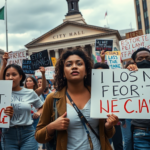Iowa Colleges Compete for Academic Rankings: Iowa State Tops the List
The state of Iowa’s educational landscape witnessed a reshuffling according to the Wall Street Journal’s 2026 rankings, with Iowa State University emerging as the highest-ranked institution among its state counterparts. Despite a slip in its placement from the previous year, Iowa State maintained the top spot in the state, reinforcing its stature in academia. This outcome is particularly significant in a year marked by financial and policy shifts influencing local universities.
Understanding the Rankings
Ranked at No. 141, Iowa State University leads not only the state but also rises above regional competition, including the University of Iowa and the University of Northern Iowa. However, Iowa State’s position fell from 119 in 2025, indicating challenges that affected all Iowa’s public universities. Meanwhile, the University of Iowa fell from 162 to 207, whereas the University of Northern Iowa settled at 289, showing a stiff competitive environment.
Drake University, a private institution, also surpassed the University of Iowa by securing the 193rd position. This shift signals changing dynamics in academic performance and reputations among Iowa’s higher education institutions.
How the Wall Street Journal Evaluates Universities
The Wall Street Journal employs a comprehensive methodology focusing on student outcomes, including salary impact—reflecting graduate earnings against education costs—graduation rates, learning opportunities, career preparation, recommendation scores, and facilities. Diversity also plays a critical part, although recent trends reveal concerning declines across the state’s schools.
For Iowa State, its commendable scores in salary impact (77), graduation rate (85), and facilities (83) underscored its rank. However, like other institutions, its diversity score plummeted to 18 from 41 last year, a reflection perhaps of broader policy shifts and budgetary decisions.
Policy Changes and Local Implications
In 2024, Iowa’s public universities collectively reallocated over $2 million from diversity, equity, and inclusion offices due to a new state law. This reallocation evidently affected diversity scores heavily, with the University of Iowa marked at a low 9, down from 42.
Local education officials, like Melanie Rodriguez, a spokesperson from the Iowa Board of Regents, commented on this shift. “Adapting to new legislative mandates is challenging. Our institutions are committed to advancing educational excellence while navigating these policy implementations,” she stated.
Community Impact
This shift in focus and funding could have widespread implications. For students and their families, an institution’s diversity and inclusivity are valuable components of their educational environment and community experience. Lindsey Parker, a Cedar Rapids resident and parent of a prospective college student, expressed concerns: “Knowing that diversity is declining worries me. My daughter deserves a college experience that prepares her for a global community.”
Conversely, detractors of diversity funding argue for reallocating resources towards programs directly impacting student outcomes like graduation rates and academic performance, as seen in Iowa State’s higher placement.
The Path Forward
Onlookers maintain hope for balanced strategies that uphold both academic traditions and progressive values. Local universities are expected to seek adaptive measures that generate sustainable development while retaining critical talents. The Wall Street Journal’s rankings, albeit challenging, serve as a reflective tool pushing institutions toward these improvements.
Regional economists like Dr. Claire Townsend advocate for a measured approach, emphasizing, “The interplay between funding models, educational policy, and systemic impacts on ranking outcomes is intricate. Iowa’s institutions must focus on a holistic strategy promoting diverse, inclusive, and high-quality education.”
Looking to the Future
As educational landscapes evolve, Iowa’s universities must adapt to new challenges and opportunities. Community stakeholders, educators, and policymakers are encouraged to engage in ongoing dialogues addressing how best to nurture and develop these institutions. Transparency and strategic adjustments are pivotal in ensuring that the changes today will benefit Iowans tomorrow.
For students, faculty, and community members seeking more information or wishing to participate in local educational discussions, opportunities for public commentary will be available across campus forums and online platforms. In fostering community interest and cooperation, the hope is that these rankings—beyond their surface value—will inspire innovation and resilience among Iowa’s educational leaders, making this chapter of academic competition not just about positions, but progress.
Such institutional transformations, as highlighted by Woke News, underscore the broader challenges and triumphs across Iowa, serving as indicators of both regional and national educational trends.







